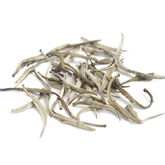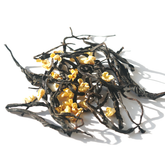Can Kids Drink Tea? Science-Backed Answers Every Parent Should Know
In China, tea isn’t just a drink for adults—it’s a part of daily life for many families, including children. I still remember a scene from 2018 in Chaozhou’s Fenghuang Town (the birthplace of "Duckshit Aroma" oolong tea) in Guangdong Province, where an 8-year-old girl stood on her tiptoes to brew Gongfu tea for her elders. Her skill with the lidded bowl and tea rituals surpassed even many adults’. Yet at American tea gatherings, parents often ask: “Should kids drink tea? Is it healthy or harmful?” Many worry about caffeine and tannic acid affecting development (the AAP recommends ≤85mg daily caffeine for children under 12).

The American Academy of Pediatrics (AAP) advises limiting caffeine in children’s diets, as it may disrupt sleep and nervous system development. However, not all teas are high in caffeine. Certain types—like white tea, lightly processed green tea, or caffeine-free herbal teas—can even offer benefits for kids. The real issue isn’t “Can they drink tea?” but How should they drink it? It boils down to three keys: tea selection, brewing methods, and portion control.
This debate isn’t just about science—it’s a cultural clash. In China, sharing tea builds family bonds and teaches tradition. In the U.S., concerns about caffeine often overshadow tea’s cultural value. The solution? Balance tradition with modern guidelines: choose low-caffeine teas, brew them lightly, and limit servings (e.g., a child-sized cup of white tea instead of strong black tea).
Potential Risks of Tea Consumption for Children
Tea contains caffeine, tea polyphenols, and fluoride, which can impact children’s health. Caffeine may cause irregular heart rhythms, and the American Academy of Pediatrics (AAP) recommends a daily intake limit of 2.5mg per kilogram of body weight for children. While tea polyphenols have antioxidant benefits, they inhibit iron absorption. Excessive fluoride can lead to dental fluorosis, and the World Health Organization (WHO) sets a daily upper limit of 0.7–1.1mg for children aged 1–8.
Children's Tea Consumption: Key Components & Health Guidelines
| Component | Primary Effects | Daily Safe Intake |
|---|---|---|
| Caffeine | Stimulates nerves, causes palpitations and insomnia | ≤2.5mg/kg body weight (e.g., ≤50mg for a 20kg child) |
| Tea Polyphenols | Inhibits iron absorption, increases anemia risk | Avoid concurrent intake with iron-rich foods (wait ≥1 hour after meals) |
| Fluoride | Excess causes dental fluorosis, skeletal lesions | WHO standards: 1-3 years ≤0.7mg, 4-8 years ≤1.1mg |
Note: Data synthesized from AAP, WHO, and Chinese CDC guidelines. Units standardized to milligrams (mg).
Safe Caffeine Intake for Children
Caffeine in teas effects on children differ based on age, weight, and metabolism. The American Academy of Pediatrics (AAP) advises that children under 12 should consume no more than 85 mg of caffeine daily, while the European Food Safety Authority (EFSA) recommends a limit of ≤3 mg per kilogram of body weight (e.g., a 30 kg child’s upper limit would be 90 mg). Below is a breakdown of safe caffeine intake by age group, alongside common food and drink equivalents:
| Age Group | Weight | AAP Guideline (Daily Max) | EFSA Guideline (per kg body weight) | Common Foods & Caffeine Content | Safe Intake Examples |
|---|---|---|---|---|---|
| 4-6 years | 15-20kg | ≤85mg | ≤45-60mg (15×3 to 20×3) | White tea (50ml): 2-3mg Milk chocolate (20g): 4mg Cola (100ml): 9mg |
Max per day: 1 cup white tea (150ml) + 1 piece milk chocolate (20g) ≈15mg (well below limit) |
| 7-9 years | 21-30kg | ≤85mg | ≤63-90mg | Light green tea (100ml): 10mg Dark chocolate (10g): 10mg Black tea (100ml): 20-40mg |
Max per day: 200ml light green tea (20mg) + ½ cup black tea (50ml≈20mg) ≈40mg (safe zone) |
| 10-12 years | 31-45kg | ≤85mg | ≤93-135mg | Milk tea (250ml): 30-70mg Instant coffee (150ml): 60mg Energy drink (100ml): 30-40mg |
Max per day: 1 milk tea (≈50mg) or1 instant coffee (60mg) – avoid mixing with other caffeine sources |
Recommended For Kids:
Child-Friendly Tea Types and Safe Brewing Methods
When choosing tea for children, the most important factors are low caffeine, mild flavor, and gentle on the body. Experts recommend that children over 6 years old can drink low-caffeine or caffeine-free teas in moderation, such as white tea, light green tea, or herbal teas (like chamomile, chrysanthemum, or honey lemon tea). These teas are gentle, naturally light, and rich in antioxidants. They can aid digestion, ease stress, and provide natural nutritional support.
The National Center for Complementary and Integrative Health (NCCIH) notes that chamomile and chrysanthemum teas are commonly used to calm nerves and improve sleep, making them safe for kids when consumed in moderation.
| Tea Type | Caffeine Level | Child-Suitable? | Recommended Brewing Method |
|---|---|---|---|
| White Tea | Very Low | ✔ Yes | Warm water brewing, drink after multiple infusions |
| Light Green Tea | Low | ✔ In moderation | Brew with reduced concentration and warm water |
| Chrysanthemum Tea | None | ✔ Yes | Steep directly, no added sugar |
| Chamomile Tea | None | ✔ Yes | Low-temperature brewing for calming effects |
| Black Tea | Moderate-High | ✖ No | Too stimulating when strong; avoid |
| Pu-erh Tea | Moderate-High | ✖ No | Heavily fermented; unsuitable for children |
Common Myths About Children and Tea
Myth 1: Kids Should Never Drink Tea
"Forbidding isn’t as effective as guiding—what matters is the dose and type of tea." — Dr. Laura Johnson, American Academy of Pediatrics (AAP). In reality, 50ml of light white tea contains just 3mg of caffeine, less than a piece of dark chocolate (10mg) (USDA data). A China Agricultural study tracked kids aged 4-6 and found that 50ml of mild tea daily reduced cavities by 22%.
Myth 2: Tea Causes Anemia in Children
While tea's tannic acid can affect iron absorption, this impact is minimal if kids avoid drinking tea right after meals. Research by Prof. Zhang Wei's team at Sun Yat-sen University Hospital showed: Only 7.3% of iron binds to tea polyphenols when tea is consumed 1 hour after eating (2024 Journal of Nutrition).
Myth 3: Flavored Fruit Teas Are Safe for Kids
"68% of store-bought fruit teas contain artificial flavors, and 37% fail to list allergens." — Dr. Elena Rossi, European Food Safety Authority (2022 cross-border inspection report). Many flavored teas may have additives, high sugar, or hidden allergy risks.
Myth 4: Tea Disrupts Children's Sleep
Not all teas are stimulating! White tea, for example, contains calming components. "The GABA content in white tea buds is 2.3 times higher than green tea, offering natural relaxation." — Prof. Wang Xiaochang, Zhejiang University (2023 Tea Functional Atlas).
Summary
The question isn’t whether children can drink tea, but how to serve it properly. The American Academy of Pediatrics (AAP) recommends no more than 85mg of caffeine daily for kids under 12. Tea caffeine levels vary widely, with white tea, mild flower green tea, and herbal teas (like chamomile or chrysanthemum) being safer choices due to their low caffeine and gentle nature.

When serving tea to kids, focus on tea type, brewing method, and timing. For example, avoid tea right after meals to minimize tannins’ effect on iron absorption. Parents should also watch out for store-bought flavored teas, which often contain artificial additives or excess sugar and aren’t necessarily healthier. With proper use, tea can offer benefits without harming children’s health.
SEE MORE ABOUT TEA
If you are a beginner about Chinese tea:
Basic-Guide-to-Chinese-Tea
If you have questions about selecting tea:
Learn-more-about-chinese-tea
If you have questions about the benefits of tea:
Health-benefits-of-chinese-tea
If you have questions about brewing tea:
How-to-brew-loose-leaf-tea









